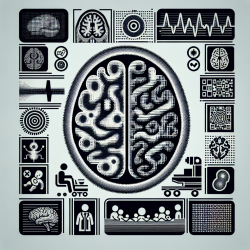Introduction
The developmental trajectory of neuroticism during adolescence is a crucial area of study, given its implications for mental health outcomes. The research paper titled Predicting change trajectories of neuroticism from baseline brain structure using whole brain analyses and latent growth curve models in adolescents provides valuable insights into how baseline brain structures can predict changes in neuroticism over time. This blog aims to explore how these findings can be applied in a practical setting, particularly for speech-language pathologists and other practitioners working with adolescents.
Key Findings from the Study
The study utilized a large sample of 1,814 healthy adolescents to explore the relationship between brain structure and neuroticism. One of the significant findings was that a reduced volume in the pituitary gland was associated with the slope of neuroticism over time. Interestingly, no significant relations with prefrontal areas were found, which challenges some existing assumptions in the field.
Implications for Practitioners
For practitioners, these findings underscore the importance of considering biological factors when assessing and planning interventions for adolescents exhibiting high levels of neuroticism. Here are some practical steps practitioners can take:
- Holistic Assessment: Incorporate assessments that consider both psychological and biological factors. Understanding the role of brain structure can provide a more comprehensive view of an adolescent's developmental trajectory.
- Targeted Interventions: Develop interventions that are sensitive to the biological underpinnings of neuroticism. This could include stress management techniques that consider hormonal influences.
- Collaboration with Neuroscientists: Engage with neuroscientists to stay updated on the latest research findings. This collaboration can enhance the development of evidence-based interventions.
Encouraging Further Research
While the study provides valuable insights, it also highlights areas for further research. Practitioners are encouraged to explore the following:
- Longitudinal Studies: Conduct studies that follow adolescents over a longer period to understand how brain structure influences neuroticism into adulthood.
- Interdisciplinary Approaches: Collaborate with researchers from various fields to explore the complex interactions between brain structure, neuroticism, and environmental factors.
Conclusion
The findings from this study offer a new perspective on the development of neuroticism in adolescents. By integrating these insights into practice, practitioners can enhance their interventions and contribute to more positive outcomes for adolescents. To read the original research paper, please follow this link: Predicting change trajectories of neuroticism from baseline brain structure using whole brain analyses and latent growth curve models in adolescents.










